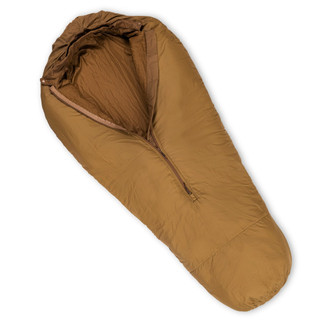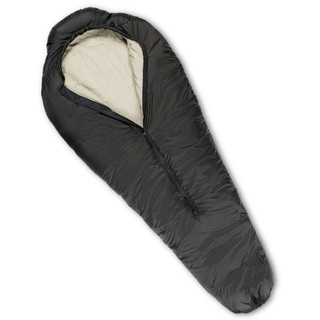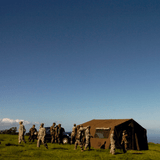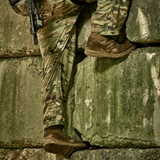How to Wash, Store and Care For a Military Sleeping Bag
How to Wash, Store and Care For a Military Sleeping Bag
Military sleeping bags are designed to take a beating, but that doesn’t mean that they don’t need to be cared for properly. This guide will walk you through the best practices for washing, drying, storing, and maintaining a military sleeping bag--including synthetic, down, and DWR sleeping bags--to ensure your bag stays in top condition for your next outdoor excursion.
How to Wash a Military Sleeping Bag
Can I Wash My Military Sleeping Bag in a Washing Machine?
Yes, all types of military sleeping bags can be cleaned in washing machines, including synthetic, down, and waterproof (DWR or Gore-Tex) sleeping bags. Military sleeping bags were designed to be durable and tough enough to withstand washing in industrial washing machines. You certainly didn’t have soldiers hand washing sleeping bags in the quartermaster laundry!
What about in a Top-Loading Washing Machine?
The instructions on military sleeping bags typically say to use a front-load washing machine. The reason for this is because older top-loading washing machines typically had the agitator in the middle of the basin. The sleeping bag could get caught on the agitator, causing damage. However, most top-loading washers today don’t have a central agitator, so it is safe to wash your military sleeping bag in them.
Should I Dry Clean My Sleeping Bag?
Never dry clean a military sleeping bag. The dry cleaning chemicals can harm the insulation, causing it to lose its loft and ability to retain heat.
How Often Should I Wash My Sleeping Bag?
While it’s safe to wash a military sleeping bag, you should do it as infrequently as possible to avoid damaging the insulation. To minimize the need for washing:
- Consider using a sleeping bag liner.
- Always sleep in clean clothes.
- Don’t use a bag which is too warm for your needs because it will make you sweat at night.
Military Sleeping Bag Washing Instructions:
- Unzip the sleeping bag and slide the zipper halfway up.
- Close any Velcro straps. This prevents lint from getting stuck in the Velcro and fabric from snagging.
- Put the sleeping bag in the washing machine. Don’t add anything else to the load.
- Add a few tennis balls to the washing machine. These will bounce around in the machine, preventing the insulation from clumping together.
- Use the right laundry detergent.
- For synthetic bags, use a technical cleaner like Nikwax.
- For down bags, use a detergent specifically formulated for down.
- If you don’t have these options, choose a mild, non-detergent soap without bleach.
- Never add fabric softener. This will damage sleeping bag fibers.
- Wash on a warm, gentle cycle. The “gentle delicate” or “wool wash” are usually the best options.
- Run an extra rinse cycle. This ensures no soap residue is left in the sleeping bag, which can cause insulation to lose its loft.
- Test whether any soap is left in the bag. If suds appear when you press on the wet bag, run another rinse cycle.
- Carefully remove the sleeping bag from the machine. Lay it flat outside or near a drain. Loosely roll the bag up so water streams out of it. Do not squeeze or tightly roll the bag as this can compress the insulation.
Drying Instructions:
Machine Drying: Dry in the dryer at a low heat. High temperatures can melt sleeping bag materials. Add several tennis balls to the dryer. This is mandatory for down sleeping bags, but also useful for synthetic bags. The balls help fluff the insulation as the bag dries.
Air Drying Instructions: It’s best to air dry a sleeping bag on a flat surface, such as by draping it over a drying rack. If you must hang the bag to dry it, you’ll need to make sure it is hung in multiple spots so the insulation doesn’t clump in one area.
How to Store a Military Sleeping Bag
- Clean before prolonged storage. While you don’t want to wash your military sleeping bag too frequently, you should wash it before putting it in storage for long periods of time.
- Make sure it is completely dry before storing. Otherwise, it can get moldy.
- Do not store in a compression sack. This can compress the insulation so much that it becomes impossible to fluff, making the sleeping bag less effective.
- Allow the bag to breathe. Sleeping bags shouldn’t be stored in plastic bags or anything impermeable to air. They need to breathe to prevent mold growth and bad odors.
- Hang the bag. Instead of using the compression sack, hang your sleeping bag. Alternatively, store it loosely in a mesh storage bag like the one shown below.
General Care of Military Sleeping Bags
Even though military sleeping bags are designed for toughness, following these care guidelines will extend their life and ensure they retain their warmth.
- Use a sleeping pad or cot: Sleeping directly on the ground can tear sleeping bags.
- Repair holes immediately: Otherwise insulation can leak out. If you will be in the field for long periods of time, bring a small repair kit.
- Lubricate zippers: Zippers are the most common failure point on sleeping bags. Use graphite from a pencil to lubricate them. Never use oils or Vaseline to lube zippers as this will just attract dust and cause them to stick.
- Avoid using in front of a fire: The heat from a campfire can damage sleeping bag shells and melt insulation. If you want to bundle up in front of the fire, use a wool blanket instead.










